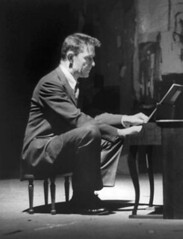John Milton Cage Jr. (1912 – 1992) was an American composer, philosopher, poet, music theorist, artist, printmaker,[1] and amateur mycologist and mushroom collector, notes Wikipedia.
A pioneer of chance music, electronic music and non-standard use of musical instruments, Cage was one of the leading figures of the post-war avant-garde.
Critics have lauded him as one of the most influential American composers of the 20th century.[2][3] He was also instrumental in the development of modern dance, mostly through his association with choreographer Merce Cunningham, who was also Cage's romantic partner for most of their lives.[4][5]
Cage is perhaps best known for his 1952 composition 4′33″, the three movements of which are performed without a single note being played. The content of the composition is meant to be perceived as the sounds of the environment that the listeners hear while it is performed,[6] rather than merely as four minutes and thirty three seconds of silence,[7] and the piece became one of the most controversial compositions of the twentieth century.
Another famous creation of Cage's is the prepared piano (a piano with its sound altered by placing various objects in the strings), for which he wrote numerous dance-related works and a few concert pieces, the best known of which is Sonatas and Interludes (1946–48).[8]
Friday, April 30, 2010
Subscribe to:
Post Comments (Atom)





No comments:
Post a Comment